David Cross – 17 September, 2012
Careful to avoid instrumentalising the art around a coherent agenda, Christov-Bakargiev opts for fluid categories around ideas of allegory, personal and place-based narratives, relationships across art and text and the carefully considered juxtaposition of artists working across different times and places. The result is often dense and very chewy.
Kassel
International group exhibition
dOCUMENTA (13)
Curated by Caroline Christov-Bakargiev
9 June - 16 September 2012
My favourite coffee mug is a slightly chipped but still elegant beaker that bears the graphic logo of Documenta 12. Well loved for the past five years, it has at the same time maintained a degree of semiotic complexity. The mug reminds me every time I drink peppermint tea how profoundly unimpressed I was by the event that spawned its existence. To this day I think Documenta 12 was the hardest slog I have had to endure through a major art exhibition. In space after space, across a multitude of venues, there appeared to be the same tepid, dry as a bone tenor to the art with very few counterpoints.
Devised by artistic director Roger M. Buergel and curator Ruth Noack, Documenta 12 was marked by a dour engagement with contemporary art that seemed heavily cerebral without being thought provoking, which no matter how you cut it is some achievement. On reflection, Documenta 12 was a show with some serious chutzpah largely for its profound ambivalence towards the idea of pleasure. The curators in a ruthless act of ascetic and aesthetic frugality, performed a spectacle-bypass operation that left me craving grandiose high-carb art like never before. In the spirit of Martin Luther, Buergel and Noack offered a radically different model of art that came without frivolity, excess or the barest semblance of humour. To some, this new lean cuisine approach might have offered a healthy respite from orthodoxy, but I found myself desperately craving fries with the bean shoot salad.
On reading curator Caroline Christov-Bakargiev‘s mission statement for dOCUMENTA (13) you could be forgiven for thinking the current Documenta promised more of the same. dOCUMENTA (13), she highlighted, “is dedicated to artistic research and forms of imagination that explore commitment, matter, things, embodiment, and active living in connection with, yet not subordinated to, theory.” Depending on how you interpret this, the statement has the necessary degree of elasticity but at the same time there is definitely a strand of practice that continues the vision of the previous Documenta. Like her predecessors, Christov-Bakargiev is compelled by history and specifically the conditions in which artists and thinkers find themselves acting in the present - of being on stage/under siege/in a state of hope/ or on retreat all the while negotiating an assortment of meta-narratives.(1.) Yet her vision is not quite as tied down or as carefully delineated as the 2007 event, and it certainly offers a much greater breadth of response to her simple, if slightly esoteric, idea that places generate space and space is the region of the possible.(2.)
In an enormous exhibition of 193 artists spread not just across Kassel but also with additional satellite showings in Afghanistan, Egypt and Canada, Documenta is a veritable beast. Conservatively it takes five days of diligent engagement to see everything and nearly everyone no matter how hard they look at the programme and map misses something. The sheer magnitude of the event offers a curatorial challenge that often leads to either an intensely controlled programme as in 2007 or a slightly more nuanced take on the art supermarket approach.
Christov-Bakargiev has sought to plough a course in between with a series of mini-themes that drift in and out of the work. Careful to avoid instrumentalising the art around a coherent agenda, the curator opts for fluid categories around ideas of allegory, personal and place-based narratives, relationships across art and text and the carefully considered juxtaposition of artists working across different times and places. The result is often dense and very chewy as a huge array of contexts and histories are unfolded. Quite a lot of the work is heavily didactic and information heavy, grappling with events in Afghanistan and the Middle East together with major upheavals in Europe in the twentieth century. Yet there are at the same time a number of works that offer considerably more than an aesthetically neutral explication of social and political context.
Alighiero Boetti’s well known Flag work Mappa from 1971 is shown in dialogue with recent projects by Mario Garcia Torres Have You Ever Seen the Snow (2010) and Share-E-Nau-Wondering-A Film Treatment (2007) both of which chart Torres’ journey to find Boetti’s mysterious One Hotel, a second home and lodge he established in Kabul in 1976. Torres’ fascination with the mythical hotel sees him recount an imagined journey to its current site via a series of fictional faxes in which he daily informed the deceased artist (Boetti died in 1994) about progress. Torres said of the work that Kabul was perhaps the ideal place to rethink history and the different ways in which a story can be told. The stories, people and buildings tend to vanish without a trace but on occasion they reappear without warning.(3.) The work comes full circle when the artist finally finds the building on a visit in 2010 and becomes its owner undertaking renovations and inviting people to have tea on the premises.
The careful layering of poetic and fictional modes positioned in relation to global geo-political events was also a hallmark of Argentinian-based artists Guillermo Faivovich and Nicolás Goldberg. Their project El Chaco en Kassel entailed transporting the second largest meteorite on earth known as El Chaco from Argentina to Kassel. Known for previously re-unifying a meteorite that had been split into two by Argentina and the United States, their work for Documenta shifted gears when the indigenous guardians of the work began to argue about its temporary shift to Europe. The standoff could not be resolved in time leaving the artists with the choice of removing themselves from the exhibition or displaying the correspondence as a form of artistic process. In choosing the later option, the artist’s opened up an entirely new front by creating interpretations that potentially undermined the very credibility of the whole meteorite story. The work ultimately offered an idiosyncratic meditation on geo-politics and specifically issues of cultural ownership played out via the absurd realm of astral detritus.
Whereas both of these works were placed in the tightly packed Fredericanum Museum along with the curator’s slightly strange Rotunda, a selection of twenty-eight small works Christov-Bakargiev described as ‘the brain of the exhibition’, the more grandiose and hyped works were located at the Hauptbahnof station, the enormous Karlsaue gardens, and in assorted satellite venues throughout the city. A lot of ink has already been spilled about Tino Sehgal’s work which true to form is not discussed in any of the assorted catalogues, and I will cover this and his Tate Turbine Hall commission in a separate review. Of the other ‘buzz works’ both Janet Cardiff/George Bures Miller and Pierre Huyghe stood out for their complex and considered engagement with site.
Cardiff in collaboration with Miller is represented with two major works, for a thousand years in Aue Park and Alter Bahnhof Video Walk at the station. The former is a soundscape work positioned in a wooded section of the park, where a large number of speakers are discretely placed on the ground and mounted in trees. The sounds move the audience from one scene to another ranging from the intimate noises of a mother and child talking to intense audioscapes of crashing trees and bombs falling. While the audience stands or sits among the trees, the space is constantly transformed from quietude to war zone and from calm to howling gale. The intense sound of the wind whistling around you without the slightest feel of a breeze was brilliantly realised.
While it could be dismissed as gimmicky, Alter Bahnof Video managed to create a highly unique and intimate experience for each of the hundreds of thousands of participants who picked up a smartphone and headphones from the station counter and headed off on a personally guided tour of the Hauptbahnhof. Cardiff and Miller had pre-filmed a video tour of the station that included a diverse cast of performers walking through the station. Cardiff’s voice, detached in a Laurie Anderson kind of way, recounted both what she saw on her journey while also guiding us to platform 13 at the far end of the station where thousands of Jews, Gypsies and other Nazi ‘deviants’ were shipped to death camps. The interplay between documentary and fiction was deftly handled including a nice moment were the battery goes flat in the footage and you have that slightly painful sense of having to trudge back to the counter and wait in a ridiculously long queue to get another one. Of course the flat battery is staged to blur the divide between virtual and real experience. There are also moments were Cardiff points to a phone box that since the filming has been vandalized creating a clever discordance between now and when the work was filmed six months before.
It must have seemed a very fruity spectacle for users of the station to see people walking like zombies with headsets watching their smartphones and trudging the same course. The artist’s care in creating a work of multiple registers beautifully blurred the line between virtual and real, performer and non-performer, crafting an innovative and complex approach to interactivity. I will pick up with Pierre Huyghe in Part Two of the review.
David Cross
(1.) Christov-Bakargiev, C, Documenta 13: The Guidebook, Hatje Cantz, Ostfildern, Germany, 2012, p7
(2.) ibid, p 7
(3.) Scharrar, E, ibid, p 68
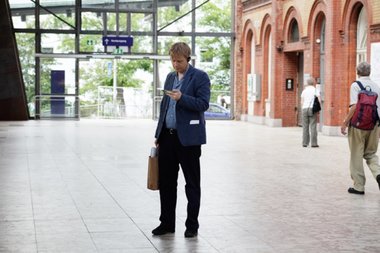
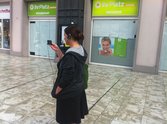
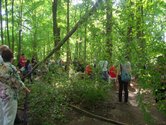
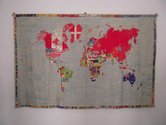
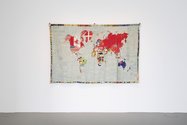
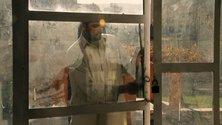
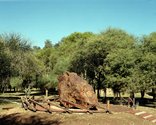
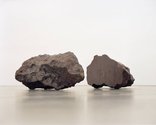

 Two Rooms presents a program of residencies and projects
Two Rooms presents a program of residencies and projects Advertising in this column
Advertising in this column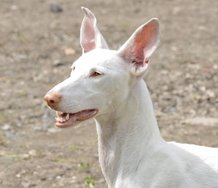
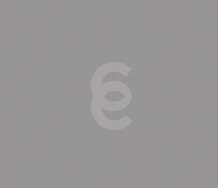
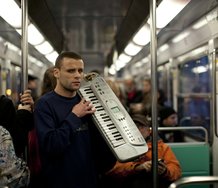
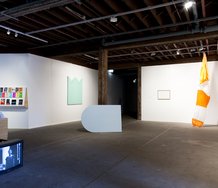
This Discussion has 0 comments.
Comment
Participate
Register to Participate.
Sign in
Sign in to an existing account.